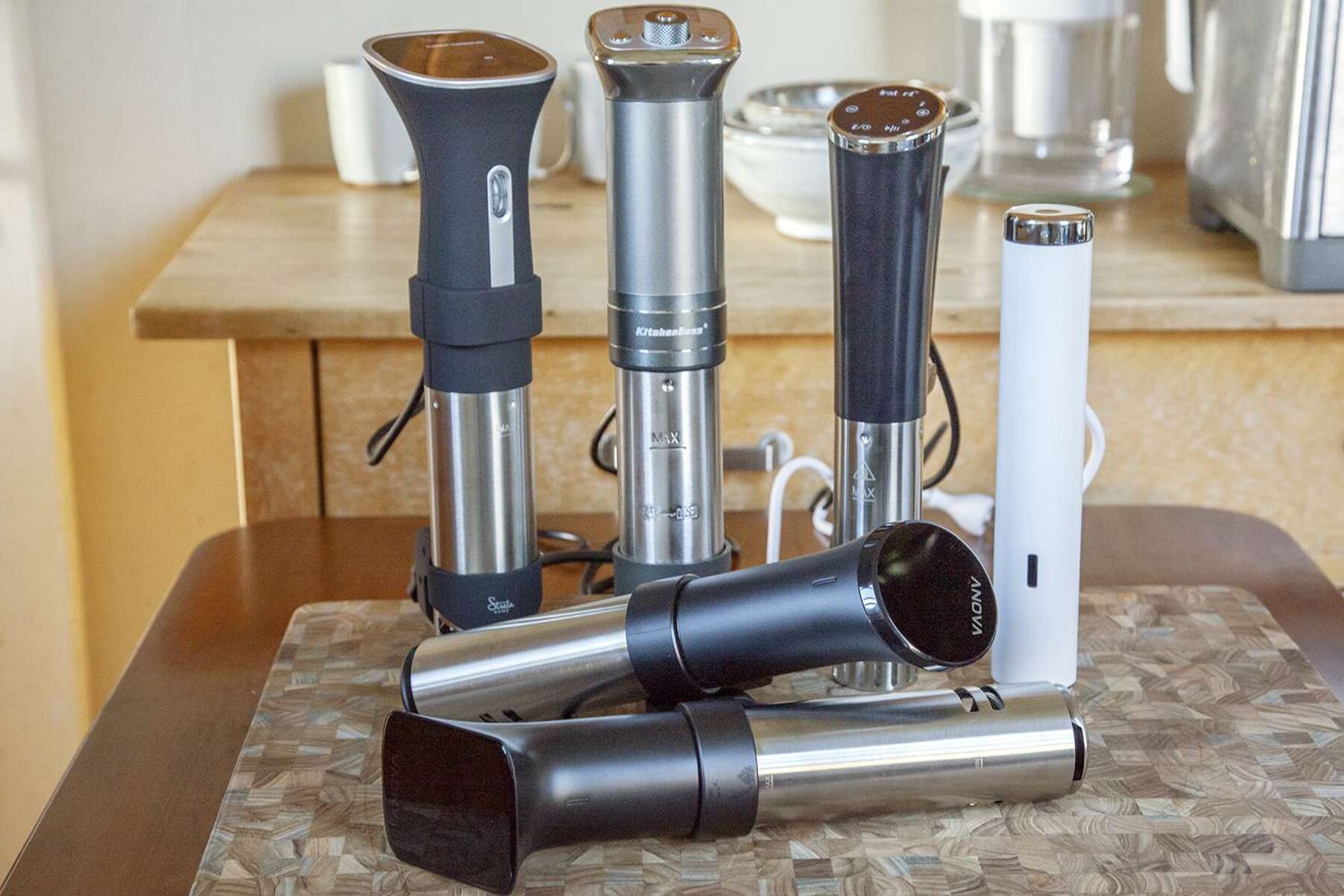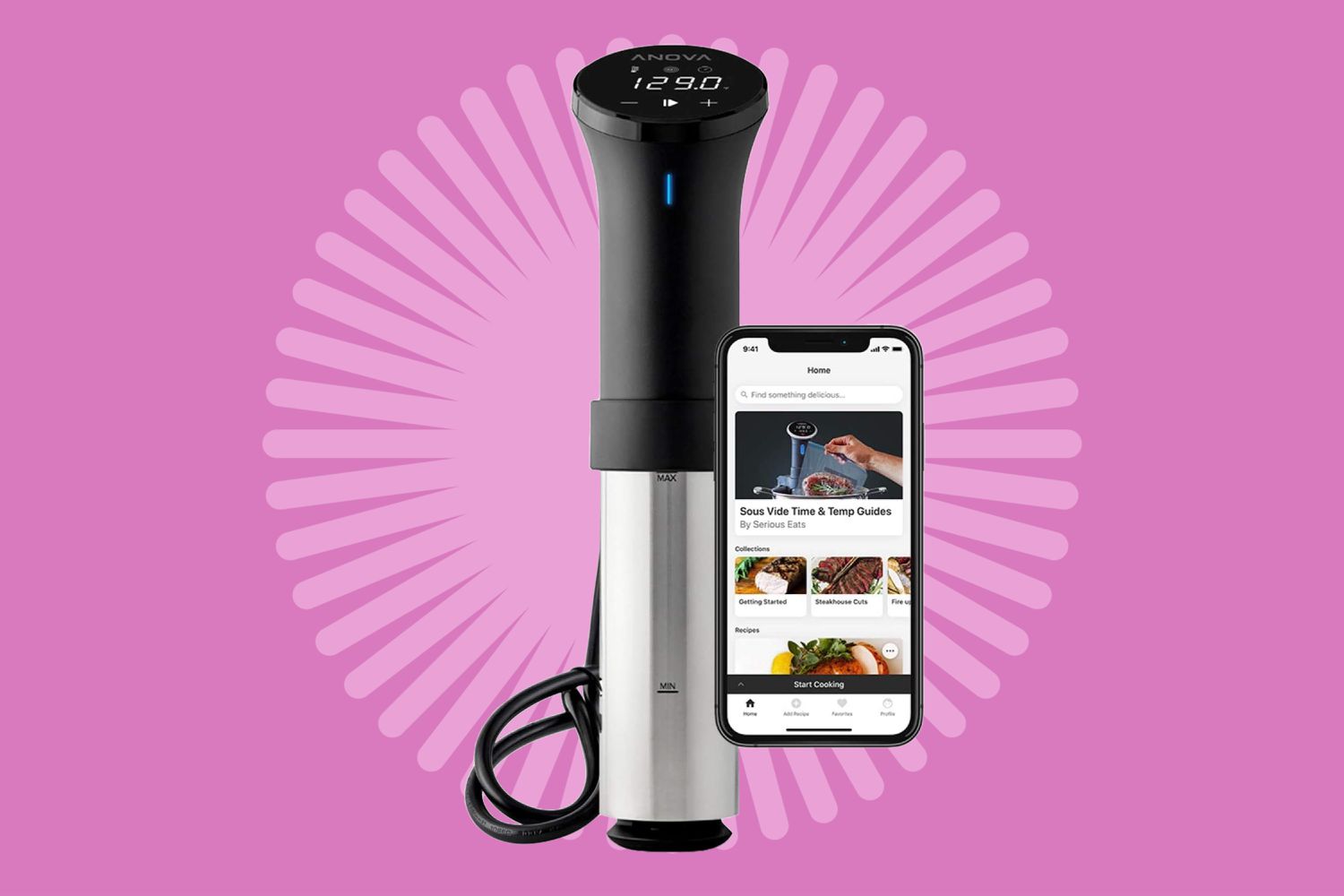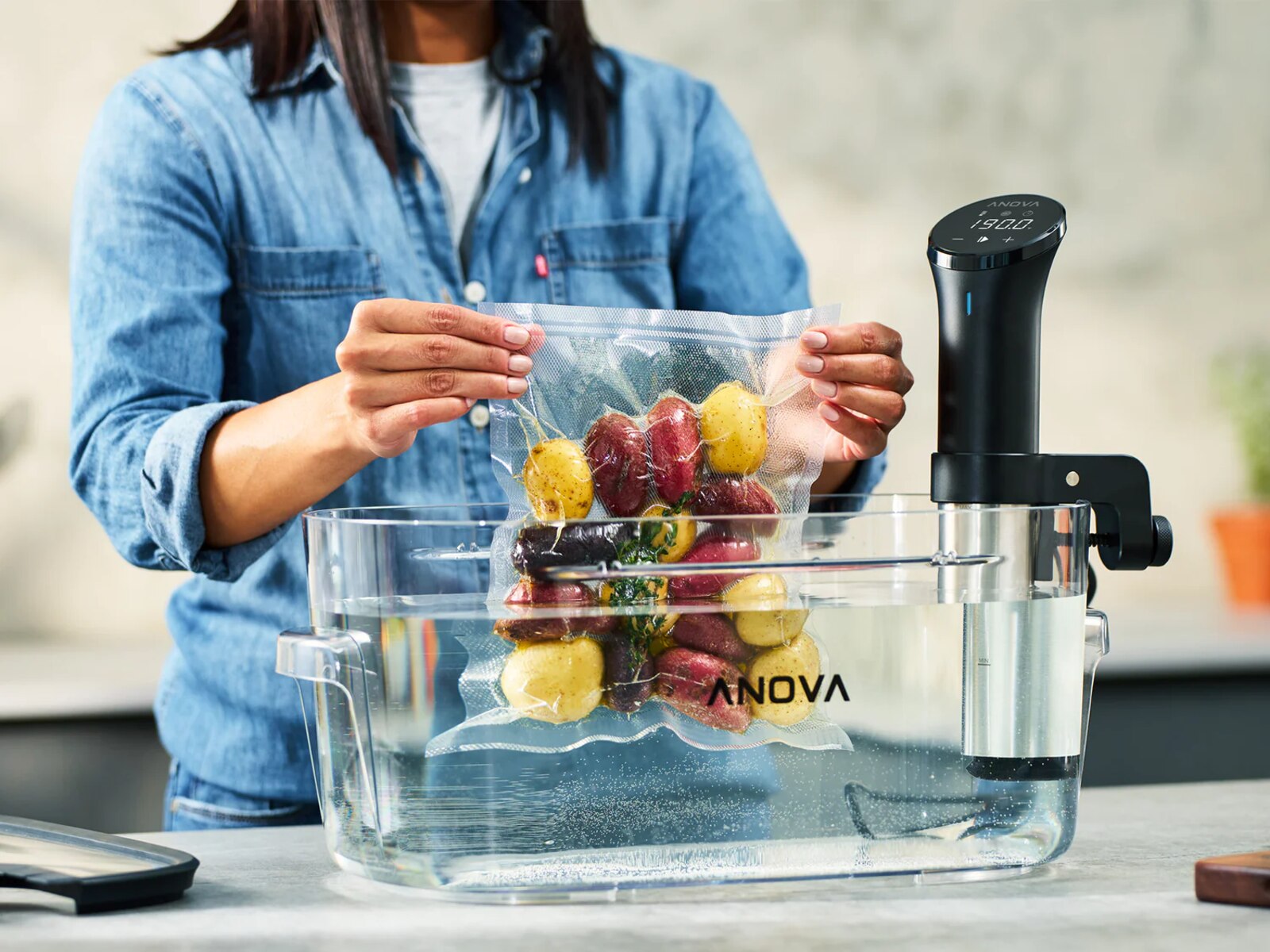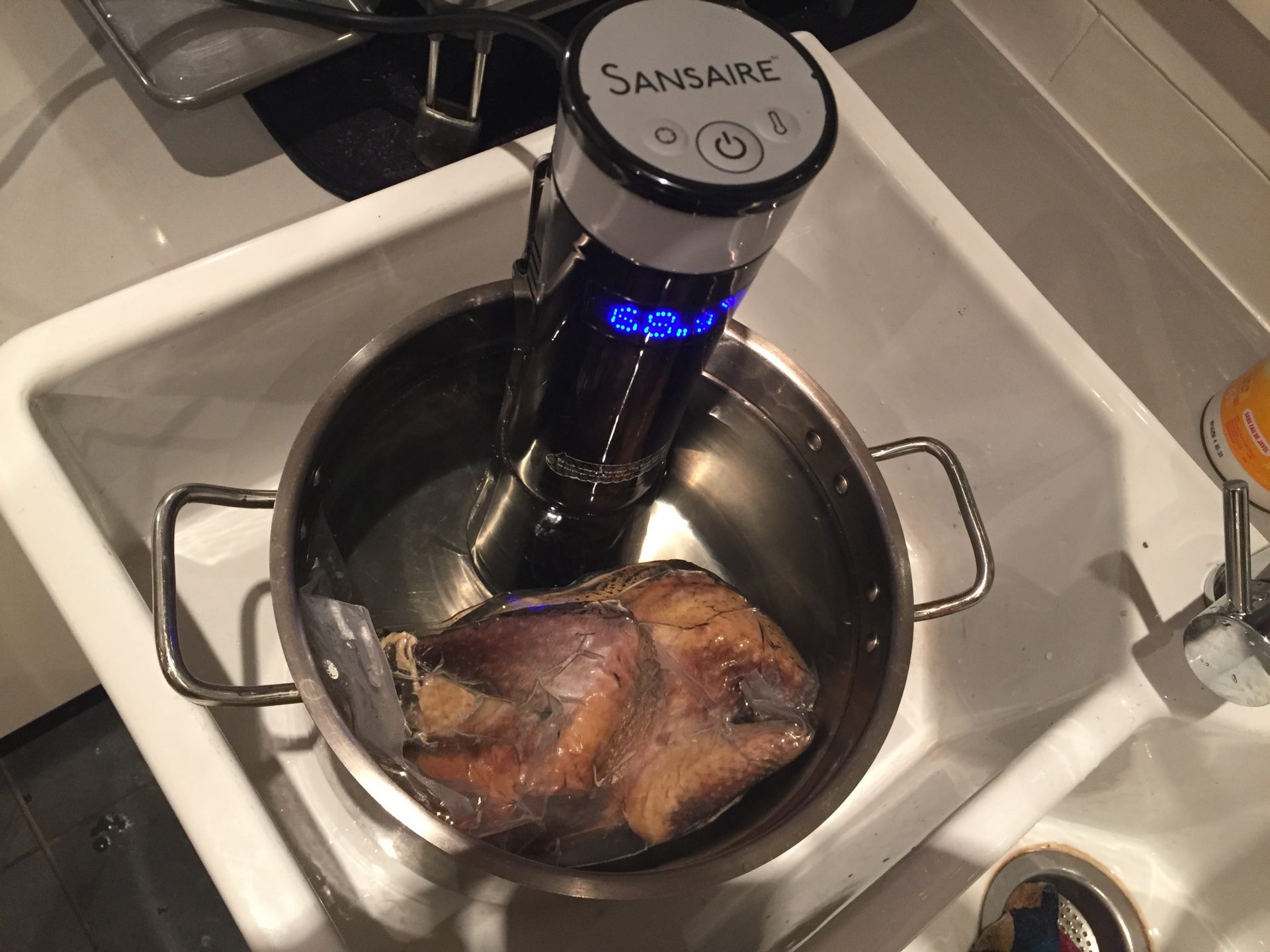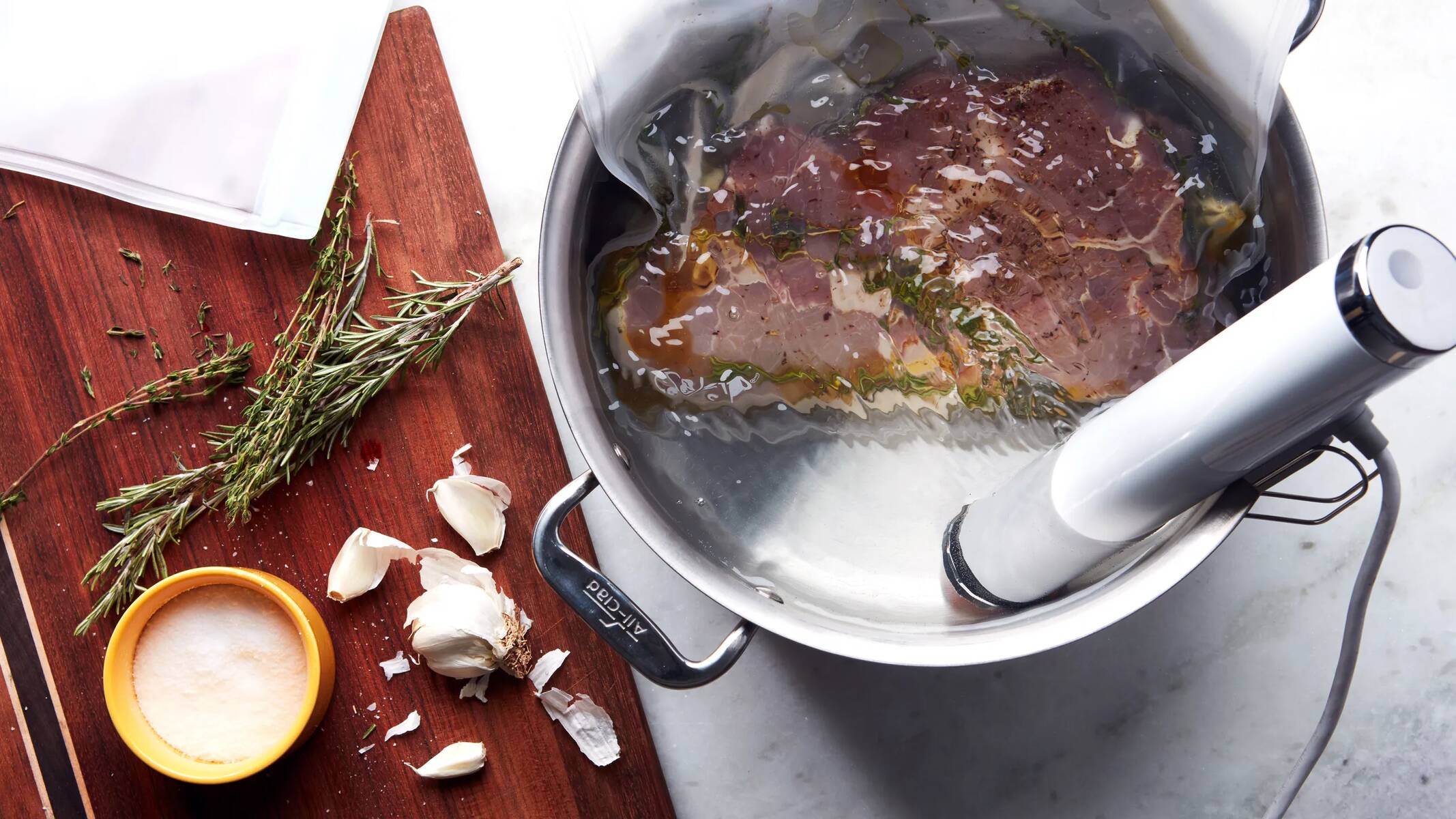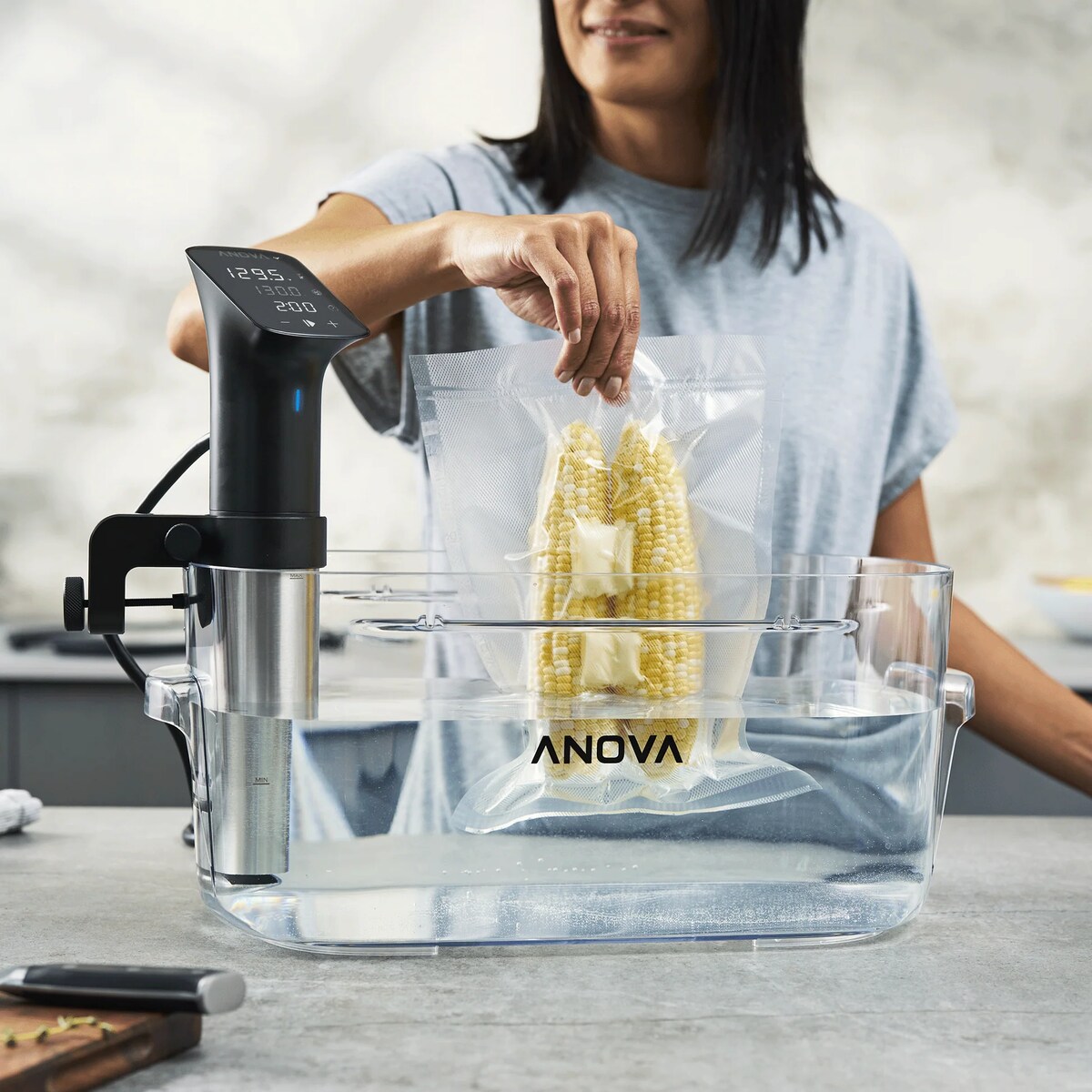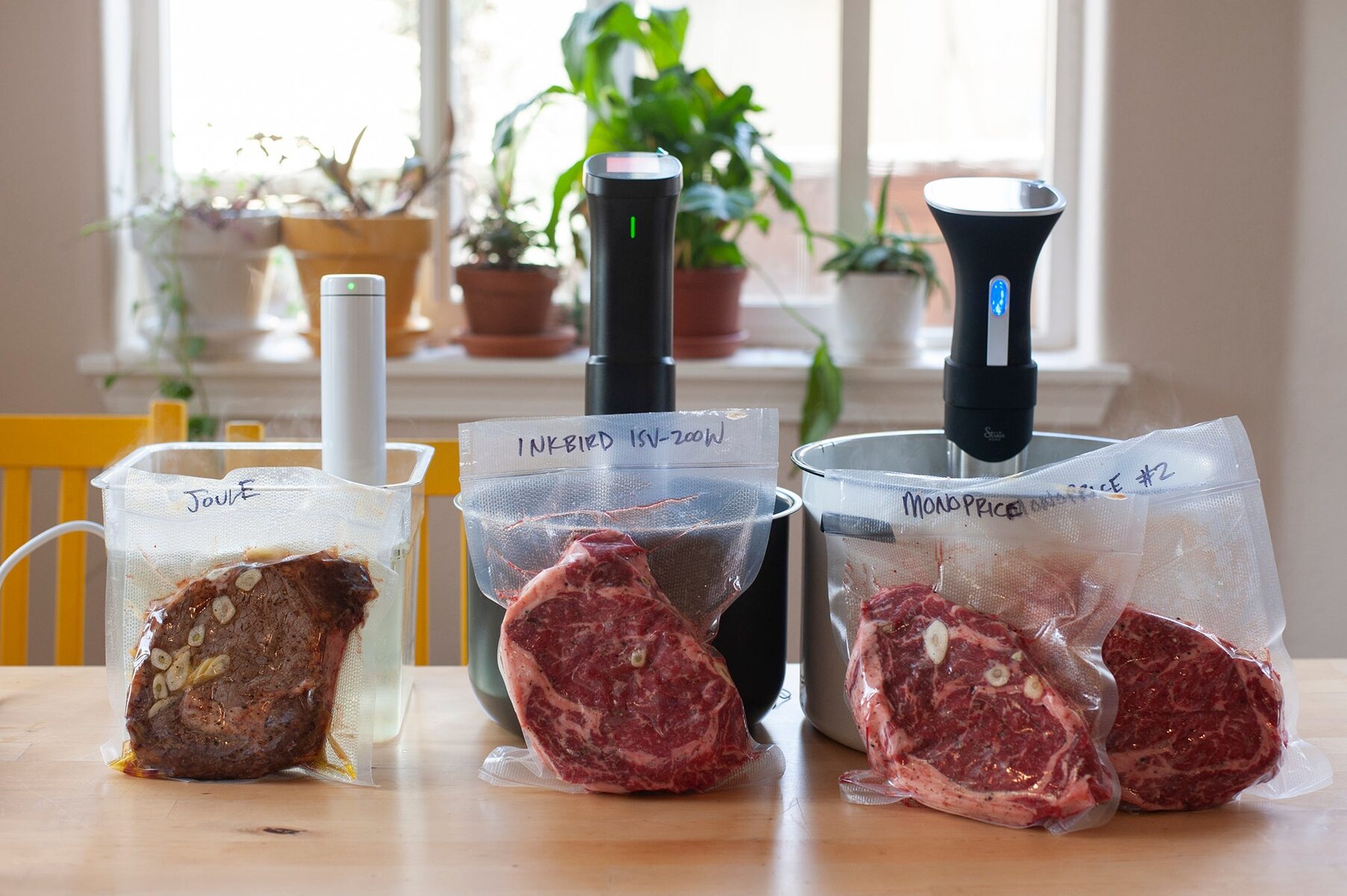Introduction
Sous vide cooking has gained popularity in recent years due to its ability to produce perfectly cooked meat with exceptional flavor and tenderness. By cooking food in a controlled water bath, sous vide machines provide consistent and precise results that are difficult to achieve with traditional cooking methods.
One question that often arises among sous vide enthusiasts is how long the cooked meat can safely stay in the sous vide machine. While the technique itself is renowned for its ability to retain moisture and flavor, it’s important to understand the factors that can affect the shelf life of cooked meat in a sous vide machine.
In this article, we will explore the basics of sous vide cooking, the different types of sous vide machines, and the key factors that influence the longevity of cooked meat. We will also provide guidelines for storing cooked meat and share recommended shelf life information. Additionally, we will discuss the signs of spoiled cooked meat to ensure optimal food safety.
Whether you’re a beginner or an experienced sous vide cook, understanding the principles behind cooked meat storage in a sous vide machine is vital. Let’s dive into the details and discover how you can make the most of this innovative cooking technique while ensuring the safety and quality of your meals.
The Basics of Sous Vide Cooking
Sous vide cooking is a method that involves sealing food in airtight bags and cooking it in a water bath at a precisely controlled temperature. This technique was originally developed in the 1970s by French chefs striving to achieve consistent and precise results in their culinary creations.
The key principle behind sous vide cooking is to cook food at a lower temperature for a longer period of time, resulting in tender, juicy, and evenly cooked dishes. The use of precise temperature control ensures that the food reaches the desired level of doneness without the risk of overcooking.
One of the main advantages of sous vide cooking is its ability to retain moisture and flavor. By sealing the ingredients in vacuum-sealed bags, the natural juices and aromas are preserved, resulting in intensified flavors and succulent textures.
Sous vide machines, or immersion circulators, are the essential tools for achieving perfect sous vide results. These devices consist of a heating element and a water pump that work in tandem to maintain a constant water temperature throughout the cooking process.
When using a sous vide machine, it’s important to ensure that the food is properly seasoned and sealed in a sturdy, airtight bag. This not only enhances the flavor but also prevents moisture loss and contamination during the cooking process.
The precise cooking times and temperatures required for different types of food can vary, depending on the texture and desired doneness. However, as a general guideline, sous vide cooking temperatures typically range from 120°F (49°C) for rare meats to 160°F (71°C) for well-done meats.
Overall, sous vide cooking offers a unique and precise approach to preparing meals that deliver exceptional flavor and tenderness. By understanding the basics of this technique and utilizing the proper equipment, you can elevate your cooking skills and create restaurant-quality dishes in the comfort of your own kitchen.
Understanding Sous Vide Machines
Sous vide machines, also known as immersion circulators, are the cornerstone of sous vide cooking. These devices play a crucial role in maintaining precise temperature control throughout the cooking process, ensuring consistent results and optimal food safety.
At its core, a sous vide machine consists of three main components: a heating element, a water pump, and a temperature control system. The heating element is responsible for heating the water inside the cooking vessel, while the water pump circulates the water to ensure even distribution of heat.
The temperature control system, often equipped with a digital display, allows users to set and monitor the desired temperature for the water bath. Advanced sous vide machines offer precise temperature control within a narrow range, allowing for specific cooking techniques such as medium-rare or medium-well doneness.
There are various types of sous vide machines available on the market, ranging from standalone devices to immersion circulator attachments that can be paired with a pot or container. Standalone sous vide machines typically have a built-in water bath container, making them a convenient all-in-one solution.
Immersion circulators, on the other hand, are compact devices that can be attached to any water-filled vessel, such as a stockpot or a plastic container. These versatile machines are popular among sous vide enthusiasts due to their portability and ability to work with different container sizes.
When selecting a sous vide machine, it’s important to consider factors such as temperature accuracy, water capacity, ease of use, and additional features. Some advanced models may offer WiFi connectivity, Bluetooth capabilities, or even smartphone control, providing added convenience and versatility.
Proper maintenance and cleaning of your sous vide machine are essential for its longevity and performance. Most machines feature a detachable stainless steel or plastic skirt that can be removed for cleaning, while the heating element and water pump should be wiped down carefully.
By understanding the different types of sous vide machines and their capabilities, you can choose the equipment that best suits your cooking needs and budget. Whether you opt for a standalone machine or an immersion circulator, these devices will be your reliable companions in achieving restaurant-quality sous vide dishes.
Factors Affecting Cooked Meat Shelf Life
Several factors come into play when determining the shelf life of cooked meat in a sous vide machine. Understanding these factors is crucial for maintaining food safety and ensuring the quality of your cooked meat.
1. Temperature: The temperature at which the cooked meat is stored plays a significant role in determining its shelf life. Bacteria and pathogens thrive in the temperature danger zone, which is between 40°F (4°C) and 140°F (60°C). Properly cooled cooked meat should be promptly refrigerated at a temperature below 40°F (4°C) to prevent bacterial growth.
2. Air Exposure: Exposure to air can accelerate the spoilage process of cooked meat. It’s essential to store the cooked meat in airtight containers or pouches to minimize contact with oxygen. Vacuum-sealed bags are particularly effective at prolonging shelf life by preventing oxidation and maintaining food quality.
3. Moisture Content: Moisture content affects the growth of bacteria and molds on cooked meat. Excess moisture can lead to microbial growth, while insufficient moisture can cause the meat to dry out. Properly sealing cooked meat in moisture-proof packaging helps preserve its texture and juiciness.
4. Contamination: Cross-contamination is a significant risk factor that can affect the shelf life of cooked meat. It’s crucial to handle cooked meat with clean utensils and separate it from raw ingredients to prevent the transfer of harmful bacteria. Additionally, maintaining a clean and sanitary cooking environment is essential for food safety.
5. Quality of Ingredients: The quality of the meat used in the sous vide cooking process can impact the shelf life of the cooked meat. Fresh, high-quality cuts of meat will generally have a longer shelf life compared to lower-quality cuts. It’s important to purchase meat from a trusted source and properly inspect it before cooking.
6. Duration of Storage: The length of time cooked meat can be safely stored in a sous vide machine depends on multiple factors, including temperature control, air exposure, and proper storage conditions. As a general guideline, it is advisable to consume cooked meat within 3 to 4 days of cooking to ensure optimal freshness and taste.
By taking these factors into consideration and following proper food safety guidelines, you can maximize the shelf life of cooked meat in a sous vide machine and enjoy safe and delicious meals for longer periods.
Storage Guidelines for Cooked Meat
Proper storage of cooked meat is crucial for maintaining its freshness, flavor, and safety. Here are some guidelines to help you store cooked meat from a sous vide machine effectively:
1. Cool Down Quickly: After cooking, cool the meat down as quickly as possible to prevent bacterial growth. Place the cooked meat in an ice bath or transfer it to a shallow container and refrigerate it promptly.
2. Store in Airtight Containers: Transfer the cooled cooked meat into airtight containers or vacuum-sealed bags to minimize air exposure. This prevents the meat from drying out and reduces the risk of contamination.
3. Label and Date: Properly label the containers or bags with the type of meat and the date of cooking. This helps you keep track of the storage duration and ensures that you consume it within a safe timeframe.
4. Keep Refrigerated: Store cooked meat in the refrigerator at a temperature below 40°F (4°C). This temperature range slows down bacterial growth and helps maintain the quality of the cooked meat. Avoid storing cooked meat in the refrigerator door, as the temperature there is less stable.
5. Freezing: If you have more cooked meat than you can consume within a few days, consider freezing it for longer-term storage. Wrap the meat tightly in freezer-safe packaging, removing as much air as possible. Label the packages with the type of meat and the date of freezing.
6. Thawing: When ready to use frozen cooked meat, thaw it in the refrigerator overnight. This slow thawing process maintains the meat’s texture and minimizes the risk of bacterial growth. Avoid thawing cooked meat at room temperature to prevent the growth of harmful bacteria.
7. One-Time Reheating: Reheat cooked meat only once to prevent the risk of bacterial contamination. Whether you choose to reheat in a sous vide machine, oven, or stovetop, make sure the meat reaches an internal temperature of at least 165°F (74°C) to ensure food safety.
By following these storage guidelines, you can maximize the shelf life of cooked meat from a sous vide machine while ensuring optimal food safety and the preservation of flavor and texture.
Recommended Shelf Life for Cooked Meat
While specific shelf life may vary depending on factors such as storage conditions, type of meat, and individual preferences, here are some general recommendations for the shelf life of cooked meat from a sous vide machine:
1. Refrigerated Shelf Life: Cooked meat that has been properly stored in the refrigerator can typically be consumed within 3 to 4 days. This timeframe helps ensure the freshness, flavor, and safety of the meat. It’s important to note that the meat may start to lose its quality and taste after this period.
2. Frozen Shelf Life: If you choose to freeze cooked meat for longer storage, it can generally be kept in the freezer for 2 to 3 months without significant loss of quality. However, for the best flavor and texture, it’s advisable to consume the frozen cooked meat within this timeframe.
3. Vacuum-Sealed Shelf Life: Vacuum-sealed cooked meat has an extended shelf life compared to meat stored in regular airtight containers. When vacuum-sealed, cooked meat can last in the refrigerator for up to 1 week, and in the freezer for 3 to 6 months, while retaining its quality and taste.
4. Ground Meats: Ground meats, such as burgers or sausages, generally have a shorter shelf life compared to whole cuts of meat. It’s recommended to consume cooked ground meats within 1 to 2 days when refrigerated and within 1 to 3 months when frozen.
5. Leftovers: If you are using leftover cooked meat from a sous vide machine, it is best to consume them within 3 to 4 days when refrigerated. Be sure to reheat the leftovers thoroughly to an internal temperature of at least 165°F (74°C) before consuming.
It’s important to note that these are general guidelines, and the shelf life of cooked meat may vary depending on specific circumstances. Always trust your senses and look for signs of spoilage, such as a sour or off odor, abnormal texture, or discoloration. When in doubt, it’s advisable to discard the cooked meat to avoid any risk of foodborne illness.
By following these recommendations and practicing proper storage and handling techniques, you can maximize the shelf life of cooked meat from a sous vide machine, ensuring both quality and safety in your culinary creations.
Signs of Spoiled Cooked Meat
It is crucial to be able to identify the signs of spoiled cooked meat to ensure food safety and prevent the consumption of potentially harmful food. Here are some common indicators that cooked meat has gone bad:
1. Off Odor: If the cooked meat emits a foul or off odor, it is a strong sign that it has spoiled. A sour, rancid, or putrid smell indicates the presence of bacterial growth and decomposition.
2. Abnormal Texture: Spoiled cooked meat may have a slimy or sticky texture. If the meat feels excessively moist or mushy, it is likely that bacterial or fungal activity has compromised its quality.
3. Unusual Color: Discoloration is another evident sign of spoiled cooked meat. If you notice any green, gray, or unusual patches on the meat’s surface, it is an indication of bacterial or mold growth and should not be consumed.
4. Mold Growth: Visible mold growth on cooked meat is a clear indication of spoilage. Mold appears as a fuzzy, furry, or powdery substance on the surface of the meat and should be discarded immediately.
5. Excessive Gas: If the packaging of cooked meat appears bloated or inflated, it may be a result of gas production by bacteria. This is a strong indication that the meat has undergone spoilage and should be discarded.
6. Sour Taste: A sour or off taste when consuming cooked meat is a definite sign of spoilage. If the meat tastes unpleasant or different from its usual flavor, it is best to err on the side of caution and avoid consuming it.
It’s important to note that in some cases, the signs of spoilage may not be easily detectable. Bacterial contamination can occur without noticeable indicators, especially in the case of harmful bacteria like Listeria or Salmonella. Therefore, practicing good food safety habits, including proper storage and adhering to recommended shelf life guidelines, is crucial to prevent the consumption of spoiled cooked meat.
If you observe any of these signs of spoilage or have any doubts about the safety of the cooked meat, it is best to discard it and avoid any potential risks to your health.
Conclusion
Sous vide cooking offers a unique and precise method of preparing perfectly cooked meat with enhanced flavor and tenderness. Understanding the basics of this cooking technique, the different types of sous vide machines, and the factors that affect the shelf life of cooked meat is essential for any sous vide enthusiast.
By following proper storage guidelines, such as cooling down cooked meat quickly, using airtight containers, and refrigerating or freezing as necessary, you can maximize the shelf life and maintain the quality of your cooked meat. It’s important to be aware of recommended shelf life timelines for different types of meat and take into account factors like temperature, air exposure, moisture content, and proper handling to ensure food safety and enjoyment.
Recognizing the signs of spoiled cooked meat, such as off odor, abnormal texture, discoloration, mold growth, excessive gas, or sour taste, is crucial for preventing the consumption of potentially harmful food. Trusting your senses and practicing good food safety habits are key in maintaining the utmost quality and safety standards.
Whether you’re a beginner or an experienced chef, the world of sous vide cooking offers endless possibilities for creating flavorful and tender dishes. By mastering the art of proper storage, handling, and recognizing signs of spoilage, you can confidently experiment with different cuts of meat, enhance your culinary skills, and delight in the exceptional results that sous vide cooking has to offer.
So go ahead, fire up that sous vide machine, and enjoy the incredible flavors and textures that can be achieved with this innovative cooking technique. Happy cooking!










